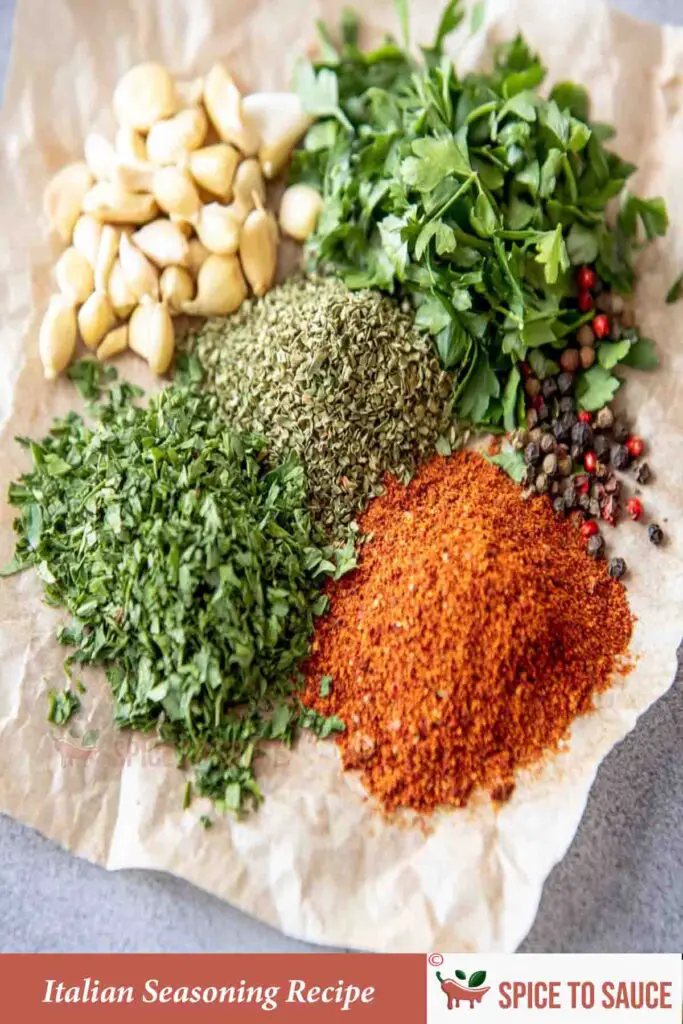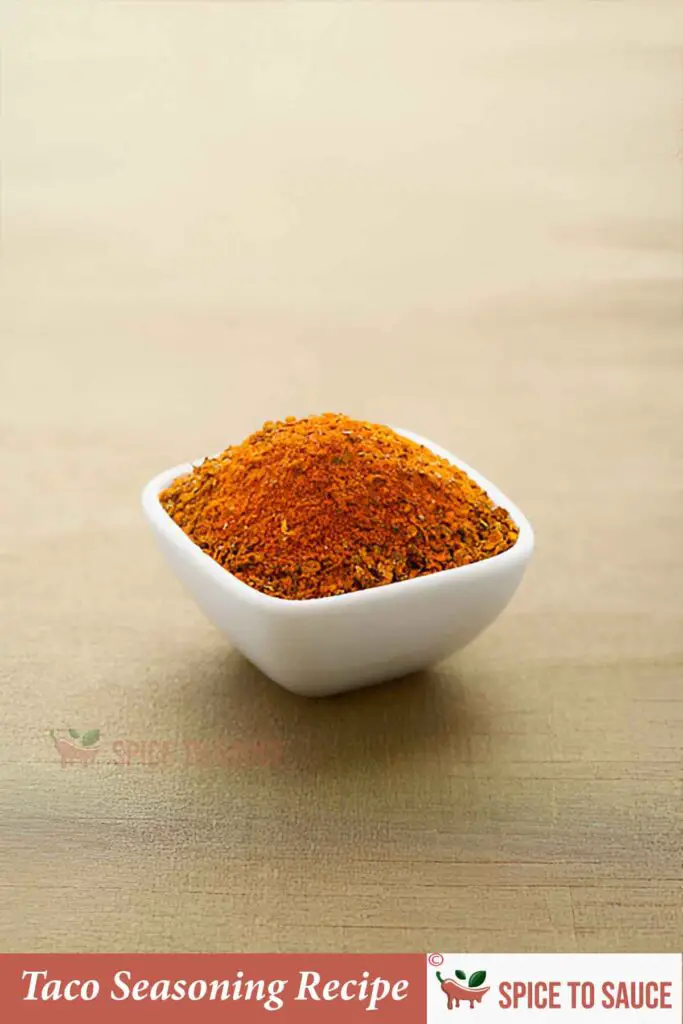Are you tired of bland dishes and looking to add a burst of flavor to your meals? Look no further than this homemade Italian seasoning recipe! This versatile blend of herbs and spices is a must-have in any kitchen, whether you’re cooking up a savory pasta dish or adding a zing to your roasted vegetables.
Today,we’ll walk you through the simple steps to create your own Italian seasoning mix at home. Say goodbye to store-bought seasonings filled with additives and hello to a fresh, aromatic blend that will elevate your cooking to the next level. Let’s get started on creating a culinary masterpiece right in your own kitchen!

What Is Italian Seasoning?
Italian seasoning is a blend of dried herbs commonly used in cooking to enhance the flavors of Italian and Mediterranean-inspired dishes. Typically, it contains a mix of basil, oregano, thyme, rosemary, sage, and marjoram. Some versions may also include garlic powder, parsley, or red pepper flakes for added depth and heat.
While it’s closely associated with Italian cuisine, Italian seasoning as a pre-mixed blend is actually a more modern, American invention. The blend became popular in the U.S. in the 20th century, particularly in the 1970s and 1980s, as Italian-American dishes gained popularity. It was created as a convenient way for home cooks to quickly add herbal flavor to dishes like pasta sauces, pizzas, roasted vegetables, and meats without needing to measure out individual spices.
In Italy, however, herbs are used more individually and regionally, with basil and oregano commonly found in the south, while rosemary and sage are used more in the north. The Americanized Italian seasoning blend is not typically found in traditional Italian kitchens.
Italian seasoning offers a quick and easy way to replicate the flavors of Italian cooking, making it a pantry staple in many households. It’s not only useful in Italian dishes but can also enhance a variety of recipes, from soups and stews to grilled meats and roasted vegetables.
Key Ingredients In Italian Seasoning
Italian seasoning is a versatile blend of dried herbs commonly used in Italian-inspired dishes. While the exact mix can vary, the following ingredients are typically included:
Dried Basil 1 Tablespoon
Dried basil in Italian seasoning has a sweet, aromatic flavor with hints of pepper and mint. It adds a fragrant, slightly earthy note, enhancing Mediterranean dishes like pasta and pizza.
Dried Thyme 1 Tablespoon
Dried thyme has a strong, earthy flavor with subtle lemon and mint notes. It adds a savory depth to dishes, perfect for seasoning meats, sauces, and Mediterranean recipes.
Dried Rosemary 1 Tablespoon
Italian seasoning commonly includes dried thyme and dried rosemary. Thyme brings a savory, earthy flavor, while rosemary adds a fragrant, piney, and slightly peppery note to the blend.
Dried Marjoram 1 Tablespoon
Dried marjoram has a mild, sweet, and slightly floral flavor, with hints of citrus and pine. It adds a delicate, aromatic touch to Mediterranean dishes, enhancing sauces, meats, and vegetables.
Dried Parsley 1 Tablespoon
Dried parsley has a mild, fresh, and slightly grassy flavor. It adds a subtle, herbaceous note to dishes, brightening up sauces, soups, salads, and Mediterranean recipes with its light, clean taste.
Dried Oregano 2 Tablespoons
Dried oregano has a robust, savory flavor with earthy, slightly bitter notes. It’s a key ingredient in Italian seasoning, adding depth to sauces, pizzas, pastas, and Mediterranean dishes with its bold taste.
Red Pepper Flakes 1 Teaspoon
Red pepper flakes add a spicy, hot kick to Italian seasoning. Their sharp heat enhances dishes with a fiery flavor, perfect for balancing richness in pasta sauces, pizzas, and Mediterranean recipes.
Garlic Powder 1 Teaspoon
Garlic powder adds a savory, slightly sweet and pungent flavor to Italian seasoning. It provides a rich, aromatic depth, enhancing sauces, meats, vegetables, and Mediterranean dishes without the texture of fresh garlic.
Essential Equipments For Italian Seasoning
Making your own Italian seasoning at home is simple and requires just a few key ingredients and tools. Here’s a list of essential equipment you’ll need:
1. Measuring Spoons
For accurate measurement of herbs and spices. Italian seasoning typically requires small amounts of each ingredient, so using a set of measuring spoons is important.
2. Mixing Bowl
A small bowl is all you need to combine the dried herbs. You can use a glass, ceramic, or stainless steel bowl—just avoid plastic as it might absorb scents.
3. Airtight Storage Container
Once mixed, store your Italian seasoning in an airtight container (like a glass jar) to keep it fresh. This will help preserve the aroma and flavor of the dried herbs.
4. Herb Grinder or Mortar and Pestle (Optional)
If you want to grind the dried herbs into a finer texture, a small herb grinder or mortar and pestle can be helpful. This is optional but might enhance the flavor if you prefer a finer blend.
6. Funnel (Optional)
If you’re pouring your seasoning into a narrow-mouthed jar, a funnel makes the transfer process a lot cleaner.
How To Make Italian Seasoning At Home – Step-By-Step Guide To Creating The Blend.
- In a small mixing bowl, combine the dried herbs (basil, thyme, rosemary, marjoram, parsley, and oregano).
- If desired, mix in red pepper flakes and garlic powder. Combine thoroughly to create a homogenous mixture.
- Carefully transfer the homemade Italian seasoning to a jar and shut the lid.
Best Ways To Use Italian Seasoning
Italian seasoning is incredibly versatile and can elevate a wide range of dishes. Here are some of the best ways to use it:
1. Pasta Sauces
Italian seasoning is a natural match for pasta sauces, especially tomato-based ones. Just add a teaspoon or two to your marinara sauce while it simmers to bring depth and herbal flavor. It pairs beautifully with garlic, onions, and olive oil, adding that classic Italian aroma to the sauce. You can also sprinkle it on top of pasta after cooking for an extra burst of flavor.
2. Pizza
For homemade pizza, sprinkle Italian seasoning over the sauce or the crust before baking. It complements the flavors of the tomato sauce, mozzarella cheese, and any other toppings like pepperoni, sausage, or veggies. If you want an extra touch, you can mix some into the olive oil you use to brush the crust for a fragrant, herb-infused finish.
3. Grilled or Roasted Chicken
Italian seasoning works wonders on grilled or roasted chicken. Simply rub the seasoning on chicken breasts, thighs, or whole chickens along with olive oil, salt, and pepper. The herbs infuse the meat with a savory, aromatic flavor as it cooks, and it pairs well with lemon or balsamic vinegar for added brightness.
4. Salad Dressings
To make a simple yet flavorful salad dressing, whisk together olive oil, vinegar (balsamic, red wine, or white), a pinch of salt, and a teaspoon of Italian seasoning. The herbs blend perfectly with the acidity of the vinegar, giving your salad a fresh, Mediterranean touch. You can also mix it into mayonnaise or yogurt to create a creamy dressing.
5. Roasted Vegetables
Toss your favorite vegetables—like zucchini, bell peppers, eggplant, or tomatoes with olive oil and Italian seasoning before roasting. The herbs enhance the natural sweetness of the veggies and create a delicious, savory side dish.
6. Bread and Focaccia
Italian seasoning can be added to bread dough or sprinkled on top of focaccia before baking. It creates a flavorful crust and infuses the bread with aromatic herbs that pair well with olive oil and balsamic vinegar for dipping.
With its combination of earthy, savory herbs, Italian seasoning is a simple way to elevate everyday dishes into something special.
How to Store Homemade Italian Seasoning
To preserve the freshness and flavor of homemade Italian seasoning, proper storage is essential. Follow these tips to ensure the blend stays aromatic and effective for months:
1. Use an Airtight Container:
Store your seasoning in a clean, dry, and airtight container, preferably made of glass with a tight-fitting lid. This prevents air exposure, which can degrade the herbs over time.
2. Keep Away from Light and Heat:
Store the container in a cool, dark place, like a pantry or cabinet. Exposure to light and heat can cause the herbs to lose their color, potency, and flavor.
3. Avoid Moisture:
Moisture can cause the herbs to clump or grow mold. Always use a clean, dry spoon when scooping out the seasoning and avoid storing it near the stove or sink.
4. Label with Date:
Homemade Italian seasoning can retain its best flavor for 6-12 months. Label the container with the preparation date so you can track its freshness.
5. Whole vs. Ground Herbs:
Using whole or lightly crushed herbs (instead of finely ground) helps preserve the flavor longer. Crush them just before use for maximum aroma.
By following these tips, your homemade blend will stay flavorful and ready to elevate your dishes!

Italian Seasoning Recipe
Ingredients
- 1 Tablespoon Dried Basil
- 1 Tablespoon Dried Thyme
- 1 Tablespoon Dried Rosemary
- 1 Tablespoon Dried Marjoram
- 1 Tablespoon Dried Parsley
- 2 Tablespoons Dried Oregano
- 1 Teaspoon Red Pepper Flakes
- 1 Teaspoon Garlic Powder
Instructions
- Mix the dried herbs (basil, thyme, rosemary, marjoram, parsley, and oregano) in a small bowl
- Add garlic powder and red pepper flakes if preferred. Mix thoroughly to consistency
- Carefully pour homemade Italian seasoning into a jar and seal
Nutrition
Final Words
Enhance your culinary creations with the flavors of Italy by incorporating this homemade Italian seasoning into your dishes. By following this simple recipe, you can elevate the taste of your meals and bring a touch of Mediterranean charm to your kitchen. Experiment with different quantities and variations to customize the seasoning to suit your preferences. Embrace the essence of Italian cuisine and savor the rich blend of herbs and spices that this seasoning has to offer. Let your taste buds travel to Italy with every sprinkle of this fragrant mix in your cooking.
FAQs
Which Spice Is Most Common In Italian Cooking?
Basil is one of the most common spices in Italian cooking, frequently used in pasta dishes, pizza, and sauces. Other popular spices include oregano, rosemary, thyme, and garlic, all contributing to the bold, aromatic flavors characteristic of Italian cuisine.
What Are Natural Italian Spices?
Natural Italian spices include basil, oregano, rosemary, thyme, parsley, sage, and bay leaves. These herbs grow abundantly in Italy and are essential for creating authentic flavors in dishes like pasta, pizza, and various Mediterranean recipes.




